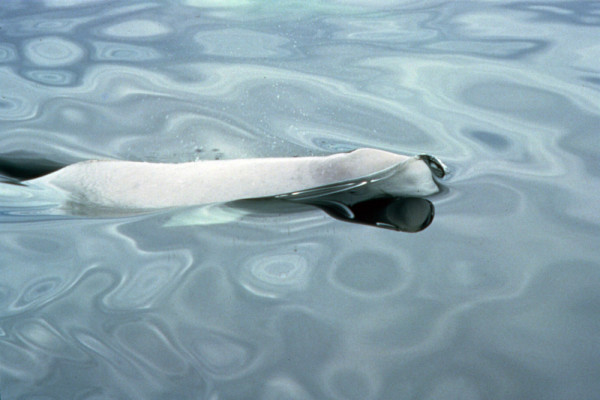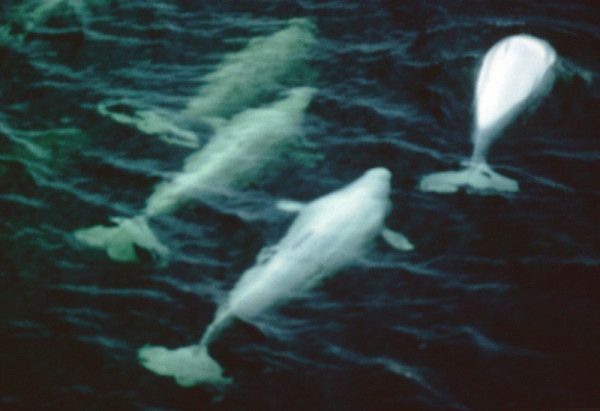Singing for their supper: Why we need to help endangered belugas in the St. Lawrence
Did you know that there is a population of beluga whales living in the St. Lawrence estuary? These belugas are geographically isolated from other beluga populations, and the St. Lawrence belugas are now considered endangered. It is estimated that there are approximately 900 whales remaining, less than 20 per cent of what their numbers were in the early 1900s. These unique whales are of great concern to WWF, and are the subject of our work on freshwater, oceans and the Arctic.
© Robert Michaud / WWF-Canada
WWF-Canada’s freshwater team is investigating the health of, and threats to, freshwater ecosystems across Canada. We’re finding out more about the state of our freshwater habitats, and why aquatic species in Canada are experiencing troubling declines. So why are we concerned about belugas from a freshwater perspective?
We often talk about the importance of healthy waters for turtles, fish, and other species restricted to lakes, rivers, and streams, but the St. Lawrence Estuary belugas, like all species, depend on healthy freshwater, as this population is intimately linked with one of Canada’s major freshwater systems. These belugas live in the region of the St. Lawrence where freshwater from the Great Lakes empties out into the Atlantic Ocean. As the ice over the Saint Lawrence Estuary and Gulf breaks up in late March, belugas start to concentrate at the mouth of the Saguenay River, Quebec, living in a gradient where salt and freshwater meet. Here, the belugas take advantage of the relatively warmer, shallow water of the river estuary to give birth and raise their young, and shed the outer layer of their skin by rubbing against the gravelly substrate of the river. Belugas in this region have even been found to travel as far as 100km into the Saguenay River to the community of Saint-Fulgence, demonstrating the importance of freshwater habitats to this population.
For many years we have known that belugas living in this region are affected by toxic chemical pollution in the water and in their prey species, pollution that comes from human industrial activities especially around the Great Lakes and St. Lawrence River watersheds. These anthropogenic (human caused) toxins accumulate in fatty tissues of many aquatic species, and then bioaccumulate right up the foodchain. By the time they get into the food of the St. Lawrence belugas, concentrations of toxins like PCBs, dioxins and PBDEs are extremely high. In fact, toxins in belugas reach such high levels that some beluga carcasses have had to be classified as ‘toxic waste’, and disposed of accordingly by the local authorities. Reducing the levels of contaminants in the habitat, food sources and belugas themselves, is one of the top objectives in the recovery strategy for the endangered St. Lawrence population.
We are currently working on the freshwater health and threats assessment for the entire Great Lakes-St. Lawrence watershed, and will release the results of our work in late June. These analyses will give us even more insight into what is affecting the health of our St. Lawrence Belugas, so that we can strategically work to improve the health of our waters and the species living within them
There are many other species around the world living in river habitats that are experiencing similar threats to the St. Lawrence Estuary beluga population. To learn more about freshwater cetaceans (i.e. dolphins, porpoises, whales) from around the world, click here.
Our beluga work depends on your support. Donate now to help us protect beluga whales.



